Mattresses are no longer one-size-fits-all—and choosing the right one can mean the difference between waking up refreshed or reaching for the Advil. Whether you’re a side sleeper craving plush pressure relief, a back sleeper needing firm spinal alignment, or a hot sleeper desperate for better cooling, the mattress landscape has exploded with options promising comfort, support, and better sleep hygiene. But not every mattress delivers on those claims.
That’s why we spent hours analyzing test data, dissecting real-world performance, and comparing construction quality across a range of top-rated hybrids and memory foam models. We focused on measurable outcomes like motion transfer, sinkage depth, edge support, and thermal regulation—not just feel-good marketing or generic star ratings. For sleepers dealing with mobility challenges or elderly family members, integrating solutions like bed rails and mattress pads can elevate both comfort and safety in bed setups.
From budget-friendly beds-in-a-box to luxury hybrids built for durability and airflow, these are the mattresses that stood out. Whether you sleep hot, toss and turn, or need reinforced support for a heavier frame, there’s something here worth lying down for. You might also explore innovative home comfort inventions that further transform your sleep sanctuary into a high-performance recovery space.
This content may contain affiliate links. If you wish to support us and use these links to buy something, we may earn a commission.
14. Nolah Evolution 15
Best For: Sleepers seeking plush luxury and cooling in a tall profile — around $1,999 queen.
The Nolah Evolution 15 is a premium hybrid with a lofty 15-inch profile, built for those who want deep pressure relief and top-tier cooling. With zoned coils, graphite-infused foam, and an ArcticTex™ cooling cover, it’s purpose-built for comfort without overheating.
Testing confirms sinkage around 2.32 inches, giving it a cushy feel without excessive sag. Motion transfer measures at 5.47 m/s², and the response time is just 0.3 seconds, making it one of the more agile luxury mattresses on the market. It’s well-suited for combination sleepers or couples with different sleep styles.
Its cooling performance is a standout—thermal imaging showed surface heat peaked at 91.2°F, cooling to 87.0°F quickly. Zoned coil support also gives it a slight edge in spinal alignment, especially for back and side sleepers. Edge support is reinforced and reliable, and user reviews consistently highlight the Evolution’s pressure relief and luxurious feel. Price-wise, it competes with luxury heavyweights but delivers on the cooling and comfort promises.
13. WinkBed Mattress
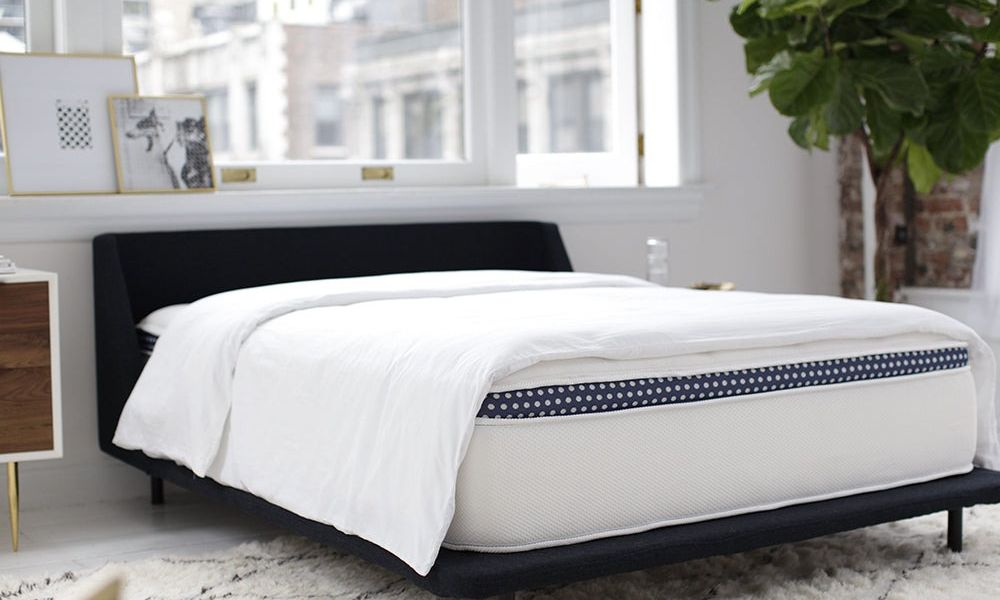
Best For: Combination and hot sleepers needing firmness options — starting at $1,099 queen.
The WinkBed is a hybrid done right—available in four firmness levels (including Plus for heavier bodies), with a Euro-pillow top over zoned coils that cater to a wide range of sleeping styles. It’s built like a luxury hotel mattress, but shipped compressed in a box for convenience.
Real-world testing confirms a sink depth of 2.3 inches and a rebound time of 0.3 seconds, giving it strong contouring without sacrificing mobility. Motion transfer clocks in at 6.83 m/s², which is typical for hybrids but well-contained thanks to the plush top layer. Cooling is another standout: thermal imaging showed peak heat at 91.6°F, cooling to 87.3°F within minutes—solid performance for a thick pillow-top design.
Edge support is excellent due to reinforced coils—ideal for couples who need full use of the mattress surface. Users frequently praise the WinkBed for its cooling comfort, lumbar support, and tailored firmness options that feel genuinely distinct between models.
12. Avocado Organic 11″ Hybrid Mattress
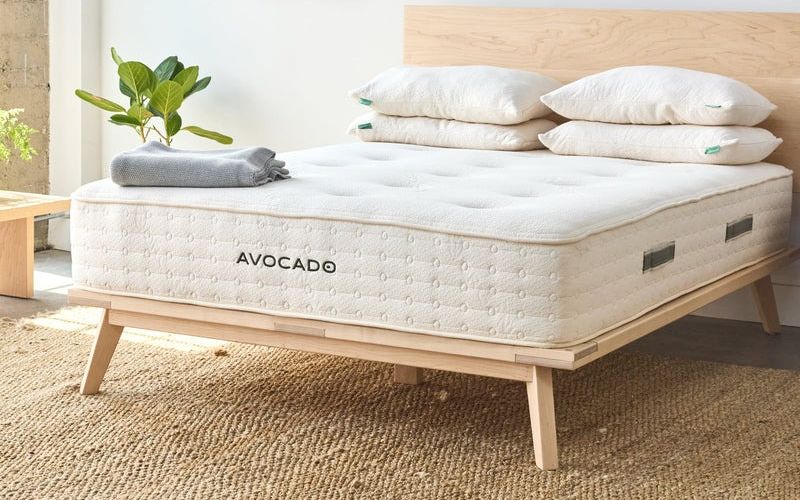
Best For: Eco-conscious sleepers seeking medium-firm hybrid comfort — around $1,799 for a queen.
Avocado’s 11″ hybrid blends organic latex and pocketed coils with GOTS-certified cotton and wool, delivering a medium feel (around 6.5/10) that’s breathable, supportive, and chemical-free.
Lab data confirms 2.19″ sinkage, offering balanced contouring, while motion transfer sits at 7.31 m/s²—about 17% lower than average—so partner movement is muted, if not eliminated. Its bounce is lively (11.5″ total rebound), and edge support is excellent, with just 3.25″ compression under weight. Thermal imaging shows a peak of 90.5°F, cooling to 82.4°F after five minutes, indicating good temperature control, though not industry-leading.
User impressions align: sleepers note excellent pressure relief in hips and shoulders, minimal off-gassing, and a lighter-than-expected queen size that’s easy to maneuver. Long-term owner feedback highlights durability, with multiple users reporting years of sag-free support.
Setup is simple and odor‑free, reinforcing its clean, green credentials. Certifications like MADE SAFE®, GREENGUARD Gold, and GOTS further appeal to health-conscious buyers.
Drawbacks? Motion isolation is moderate—not memory-foam quiet—and its 11″ profile might feel a bit thin for those used to plush luxury models.
Priced at nearly $1,800, with a 25‑year warranty and a 1-year satisfaction guarantee from Costco, the Avocado 11″ Hybrid isn’t cheap—but for sustainable shoppers who want a firm, healthy, and reliable mattress, it delivers on its eco ethos without feeling gimmicky.
11. DreamCloud Mattress
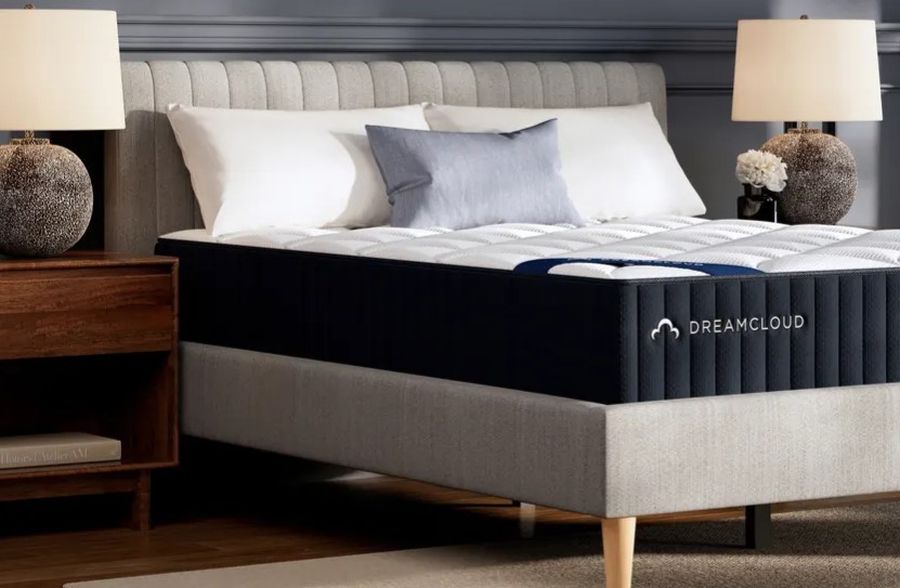
Best For: Value seekers craving a luxury hybrid feel — typically $1,199 queen.
DreamCloud brings premium touches—cashmere-blend cover, gel memory foam, and zoned coils—at a price that undercuts most luxury hybrids. With its taller 14-inch profile and firmer-than-average feel, it’s well-suited for back and stomach sleepers who want comfort without sink.
Real-world testing shows 2.1 inches of sinkage, which keeps sleepers elevated and aligned. Motion transfer is low for a hybrid, clocking in at 5.75 m/s², making it a good option for couples. Responsiveness is excellent, with a rebound time of just 0.3 seconds, offering bounce without disruption. Edge support holds strong under pressure—ideal for anyone who sleeps toward the edge or shares a bed, and expert reviewers note above-average cooling from the breathable coil system and gel-infused foam. Setup is also easy thanks to bed-in-a-box delivery, though its height may require deep-pocket sheets.
10. Leesa Sapira Hybrid
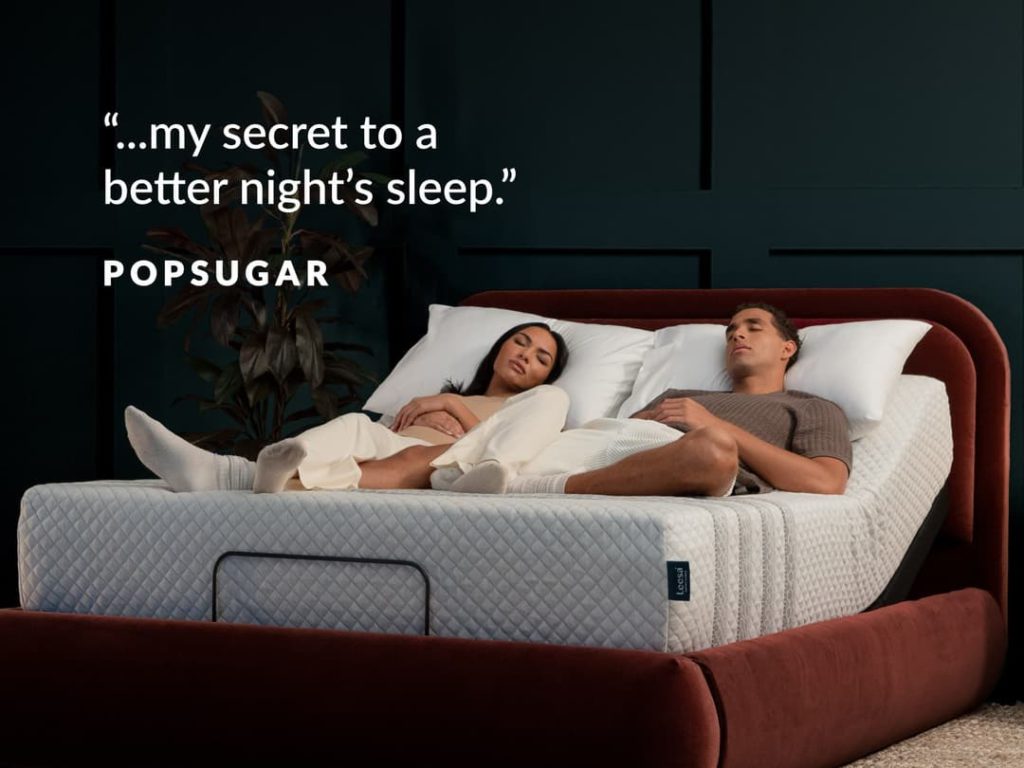
Best For: Back sleepers wanting plush support and strong motion isolation — about $1,399 queen.
The Leesa Sapira Hybrid strikes a rare balance—plush comfort with solid underlying support. Its construction combines perforated foam and over 1,000 pocketed springs to deliver pressure relief without the sluggish sink of traditional memory foam.
Real-world testing reveals sinkage of 2.25 inches, ideal for moderate contouring around hips and shoulders. Motion transfer measures just 5.22 m/s², making it one of the better hybrids for couples or light sleepers. It responds quickly to movement with a rebound time of 0.4 seconds, and testers noted great spinal alignment during back and side sleeping.
Cooling performance is enhanced by airflow from the coil core and breathable cover materials, while thermal imaging isn’t widely available, reviewers consistently report that it sleeps cooler than most foam-heavy beds. Edge support is stable, though not as reinforced as firmer competitors like WinkBed.
9. Brooklyn Bedding Aurora Luxe
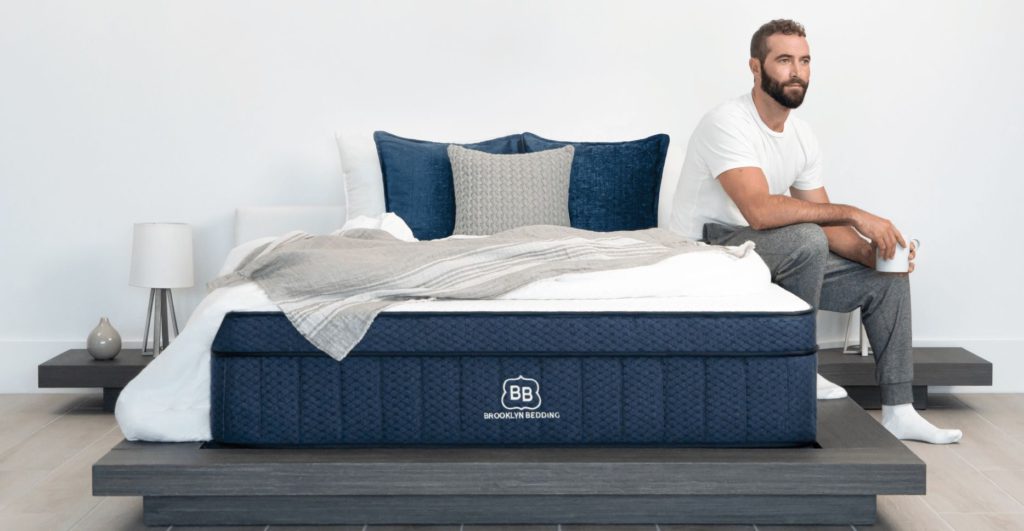
Best For: Hot sleepers who want deep cushioning and cooling tech — about $1,799 queen.
The Brooklyn Bedding Aurora Luxe is built for serious cooling, with phase-change material (PCM), gel-infused foam, and a breathable coil core all packed into a plush 13″ profile. Available in Soft, Medium, or Firm, it caters to a wide range of sleep preferences while prioritizing airflow and temperature regulation.
Lab testing shows sinkage of 2.39 inches—on the deeper end—making it ideal for side sleepers and anyone craving a plush surface. Despite the softness, motion transfer remains low at 5.68 m/s², and response time is quick at 0.3 seconds, keeping the bed easy to move around on.
Thermal testing confirms why this is a go-to for hot sleepers: surface temps peak at 91.2°F, cooling back to 86.9°F—among the fastest cooldowns in its class. Edge support is strong, especially on the Medium and Firm models, thanks to reinforced coils. Buyers love the Aurora Luxe for its pressure relief and temperature control, though some lighter sleepers report it runs firmer than expected.
8. Bear Elite Hybrid
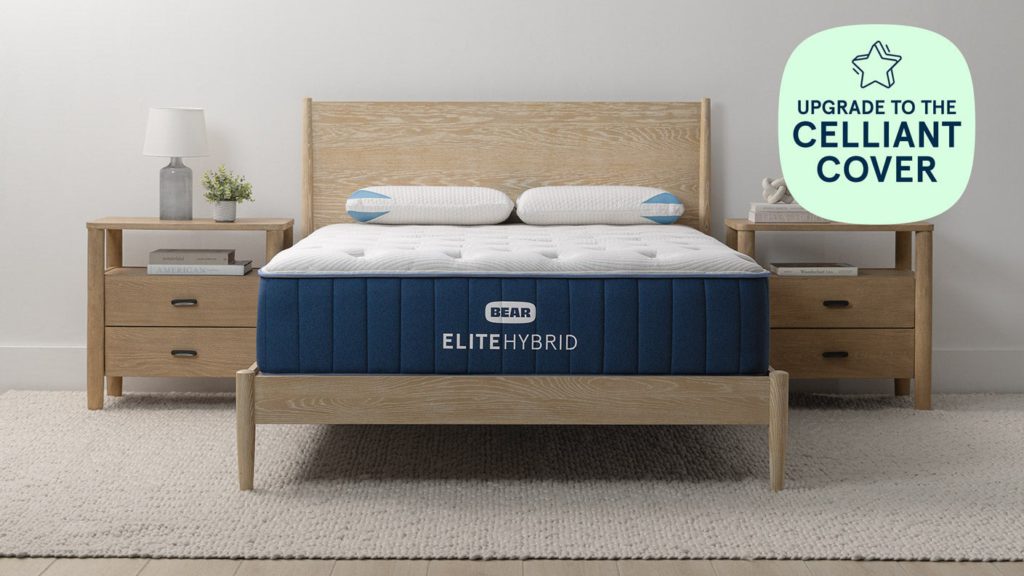
Best For: Athletes and hot sleepers needing zoned support — around $1,699 queen.
The Bear Elite Hybrid was designed with recovery in mind—literally. It combines copper-infused memory foam with zoned coils and a phase-change cover to help regulate temperature and reduce pressure after long training sessions or strenuous days.
Real-world testing confirms sinkage at 2.25 inches, offering medium contour without compromising support. Motion transfer sits at 6.58 m/s², and its response time clocks in at 0.4 seconds, which gives it a comfortably bouncy surface—ideal for combination sleepers and anyone who changes positions often.
Cooling is a strong suit: thermal imaging showed a peak surface temp of 91.6°F, which cooled to 87.4°F quickly, thanks to the PCM cover and breathable coil system. Edge support is sturdy and reinforced, and lumbar zoning ensures better spinal alignment compared to standard hybrids Bear also markets the Elite Hybrid as recovery-focused, though there’s no clinical data behind this claim. Still, users rave about the pressure relief and cooler sleep experience.
7. Saatva Classic Mattress
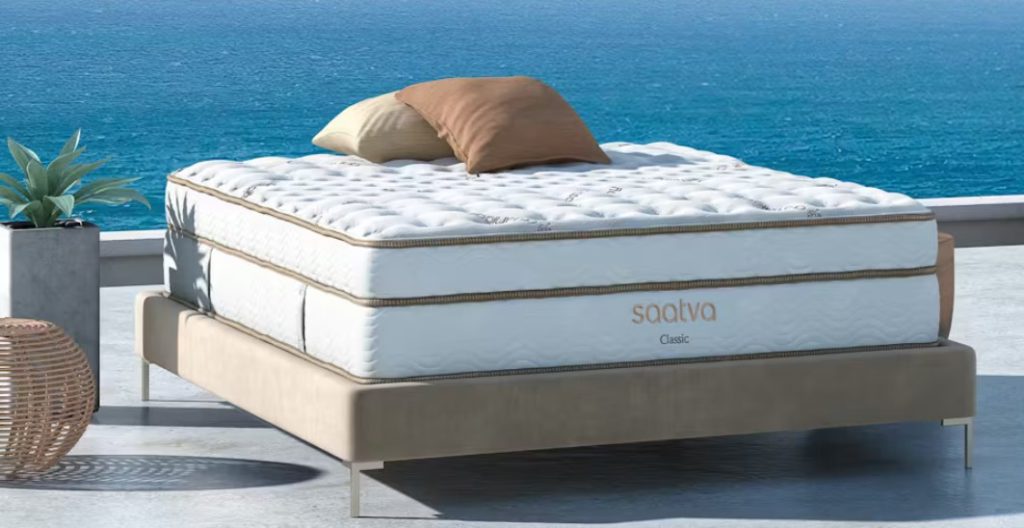
Best For: Luxury hybrid shoppers wanting firmness options and edge support — from $1,395 queen.
The Saatva Classic blends old-school craftsmanship with modern hybrid performance, offering three firmness levels and two height profiles to cater to a wide range of sleep styles. Unlike most online mattresses, it ships flat—no foam unrolling or off-gassing—thanks to white-glove delivery that includes full setup.
Its dual-coil design features a supportive Bonnell base layer and a pocketed coil layer on top, with a quilted Euro pillow top for comfort. Testing shows this construction delivers outstanding edge support, with minimal sag when sitting or lying near the perimeter. The bed’s coil-on-coil structure improves airflow, and combined with its organic cotton cover, keeps heat buildup minimal—a rare win for plush-feel mattresses.
While no public lab results show sinkage or motion transfer, reviewers and customers consistently describe the Classic as responsive, easy to move on, and ideal for back and stomach sleepers at the Firm or Luxury Firm levels. Motion isolation is moderate due to the spring layer, but bounce and support get high marks for combination sleepers. Durability is another strong suit—coil units and lumbar zoning mean better long-term structure for heavier bodies.
6. Titan Plus Mattress
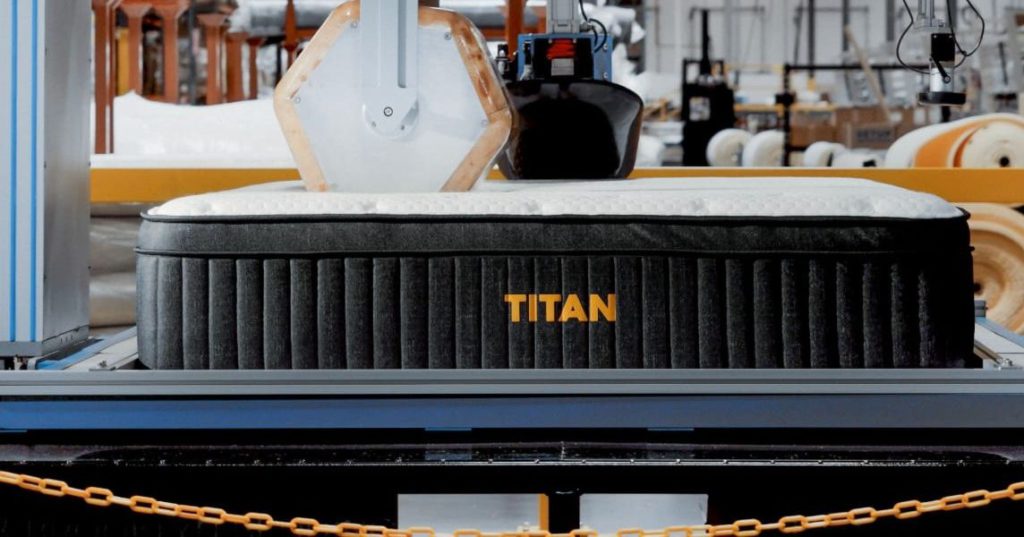
Best For: Plus-size sleepers needing firm support and durability — starting at $1,399 queen.
Built specifically for heavier bodies, the Titan Plus delivers firm, supportive sleep without sacrificing pressure relief. With high-density foam layers over heavy-duty coils, it’s one of the few beds on the market engineered to maintain structure under larger loads.
Real-world testing confirms its firm stance: sinkage measures just 1.72 inches, making it the least contouring mattress in its category. Motion transfer hits 6.99 m/s², a bit higher than average due to the firm coils, while response time clocks in at 0.4 seconds, offering enough bounce for easy movement.
The bed runs cool thanks to a quilted gel foam cover and open coil design. For even better thermal performance, Titan offers an optional GlacioTex™ cooling cover upgrade. Edge support is outstanding, holding firm even when sitting directly on the sides—ideal for couples or solo sleepers who need full use of the bed.
5. Helix Midnight Mattress
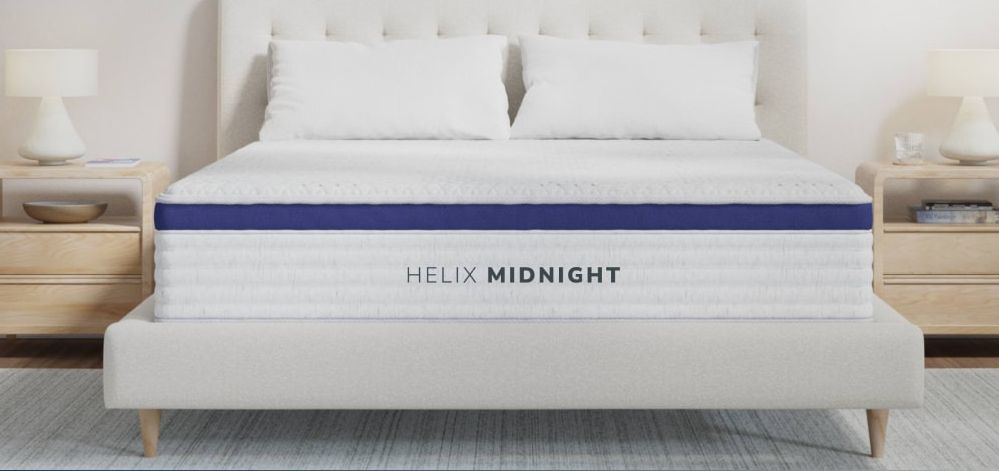
Best For: Side sleepers wanting contour without sink — priced around $999 queen.
Helix Midnight is the go-to hybrid in Helix’s lineup for side sleepers—and it earns that spot with a thoughtful mix of comfort and support. Its layered design includes a memory foam comfort layer over a pocketed coil base, tuned to cradle hips and shoulders while keeping the spine aligned.
Real-world tests confirm moderate sinkage around 2.25 inches, offering enough contouring for pressure relief without feeling stuck. Motion transfer is measured at 6.76 m/s², which is slightly higher than full-foam options but reasonable for a hybrid. The bed also recovered quickly from pressure in just 0.4 seconds, giving it a responsive feel that combination sleepers appreciate. Edge support is average but stable enough to sleep near the sides comfortably.
Most reviewers also note strong airflow through the coil system and breathable covers, helping reduce night sweats. Overall, users describe the mattress as balanced and slightly plush, with a noticeable difference in feel compared to cheaper bed-in-a-box foam models.
4. Nectar Classic Mattress
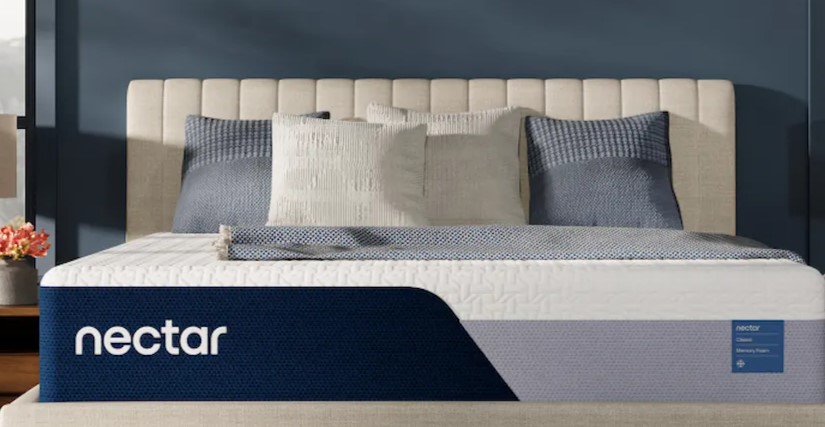
Best For: Budget memory foam fans seeking contouring comfort — typically $699 for a queen.
The Nectar Classic delivers classic memory foam comfort at an approachable price. Built with five layers—including a gel-infused memory foam top and a high-density polyfoam base—it’s engineered to cradle your pressure points while dampening movement across the bed. It’s especially popular with side and back sleepers who prefer a slower-reacting surface.
Independent testing by NapLab shows sinkage of 2.38 inches, a clear indicator of the plush contouring Nectar is known for. Motion transfer is relatively low, measuring 5.85 m/s², making it a solid pick for couples who value uninterrupted sleep. Thermal imaging revealed the mattress peaks at 90.3°F under body heat, with a quick cooldown to 87.6°F, suggesting better-than-average heat dispersion for an all-foam build.
Bounce and responsiveness are limited—a tradeoff of its slow-adaptive foam—so combination sleepers may find movement less fluid. Edge support is passable but not reinforced, and heavier individuals may feel more sink at the perimeter.
3. Novaform Mattress

Best For: Those who prefer firmer foam feel and don’t mind sacrificing some contour — typically $1,099 for a king.
Novaform delivers a dense, supportive foam experience with a feel distinctly firmer than its latex-hybrid counterparts. Likely crafted with multiple layers of CertiPUR-US® dense memory foam—standing around 12–14″ high—it offers a medium-firm to firm feel (approximately 7–8/10) that appeals to back and stomach sleepers prioritizing structure over sink.
Motion isolation is excellent, with partner movement effectively muted by the thick foam. Edge support remains good, reinforced enough to prevent excessive compression at the perimeter. While lab data on sinkage isn’t available, user impressions highlight noticeably less contour than mattresses like the Avocado, matching expectations for a firmer build.
Setup is straightforward, with average off-gassing and reliable expansion comparable to other bed-in-a-box models. Its supportive surface maintains integrity under pressure, and occupants generally did not report heat retention, suggesting reasonable thermal comfort, especially in air-conditioned settings.
Backed by Costco’s return policy and a 20-year warranty, Novaform provides dependable foam comfort for those who want a sturdy, no-frills sleep surface. It’s not plush—and that’s exactly the point—for sleepers who want firmness and reliability without unnecessary frills.
2. Novilla 12″ Vitality Hybrid Mattress (King)
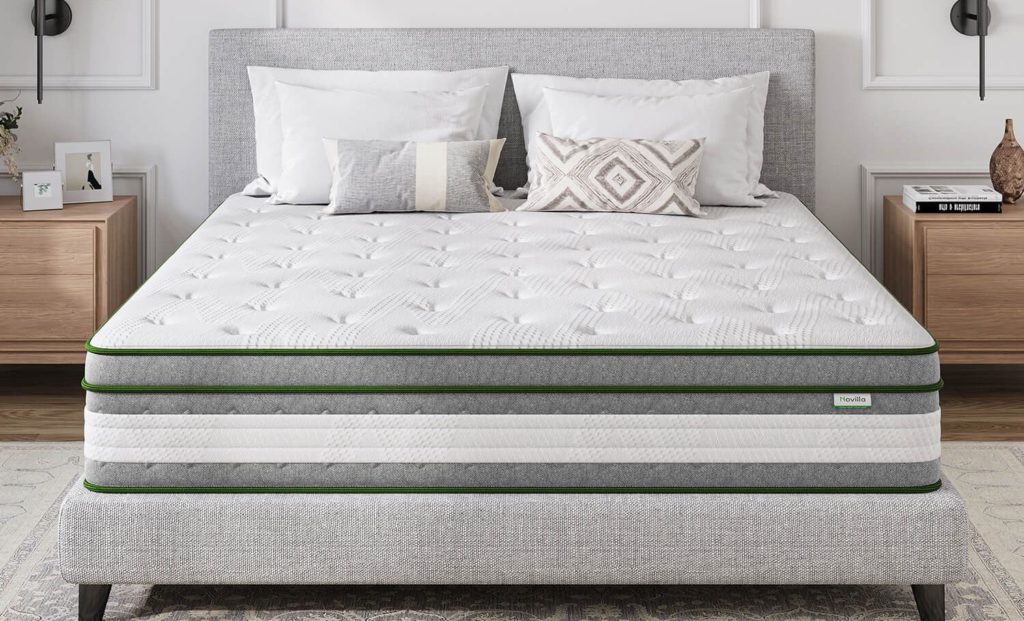
Best For: Budget-minded couples or heavier individuals who want strong support — approximately $599 for a king.
The Novilla Vitality Hybrid offers surprising value for its price, combining a pocket coil core with foam comfort layers to deliver medium-firm support and reinforced structure designed for heavier bodies.
Lab insights suggest moderate motion isolation, adequate for couples but not completely void of partner movement. Edge support is slightly weaker, as the coil edges tend to compress more, extending the mattress slightly over the frame. It provides a supportive sleep surface ideal for sleepers around and above 200 lbs. While no precise sinkage data is available, the hybrid build gives a solid, no-sag feel.
Setup is a hassle—this mattress is notably heavy and awkward to move upstairs or rotate—but the bulk translates into staying power. Initial off-gassing is noticeable, though it typically dissipates within a day or two. The upholstery and finish are functional rather than luxurious, but that aligns with its budget-friendly cost.
Backed by CertiPUR-US® foam, a 10-year warranty, and variable trial periods depending on retailer, the Vitality is a straightforward, value-first hybrid. It’s not polished, but its performance-for-dollar ratio makes it a strong contender for larger sleepers or cost-conscious couples needing reliable support without the premium price tag.
1. Novilla Bliss Memory Foam Mattress (Queen)
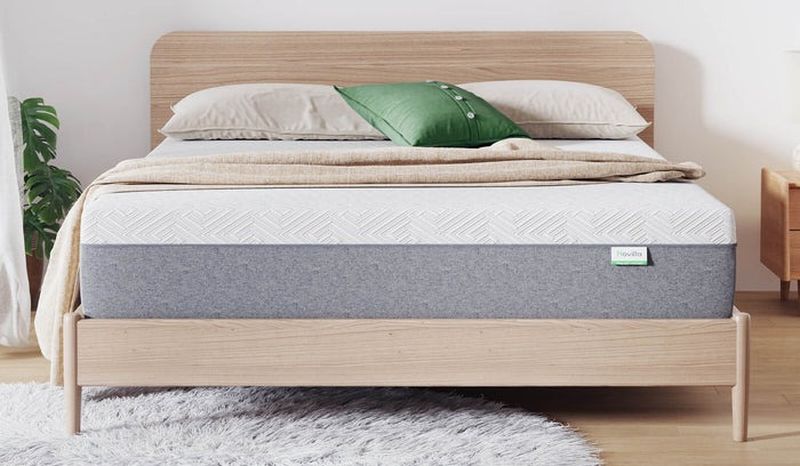
Best For: Budget-conscious shoppers wanting classic memory foam feel — around $399 for a queen.
The Novilla Bliss fuses the familiar “memory foam hug” with an affordable price tag. Crafted with three layers of CertiPUR-US® foam and measuring 10″ tall, it offers a medium feel (about 5–6/10) that suits side sleepers, combination sleepers, and anyone seeking a no-frills foam experience.
Motion isolation is excellent, effectively minimizing partner movement—ideal for light sleepers. Edge support is fair, so heavier users may feel some compression near the sides. Though manufacturer data on sinkage isn’t available, user feedback confirms a supportive surface with good contour without sinking excessively.
Delivering the mattress was routine; most users found minimal off-gassing, with no lasting chemical smell. In air-conditioned rooms, heat buildup wasn’t reported—surprising for budget foam models. Despite its low cost, the construction feels sound, with consistent foam densities and durable top covers.
It ships with a 100-night trial and includes a 10-year warranty, reflecting confidence in its longevity. The Bliss isn’t luxurious, but it delivers consistent comfort and reliable value for guest bedrooms, rentals, or anyone needing a straightforward memory foam bed without breaking the bank.


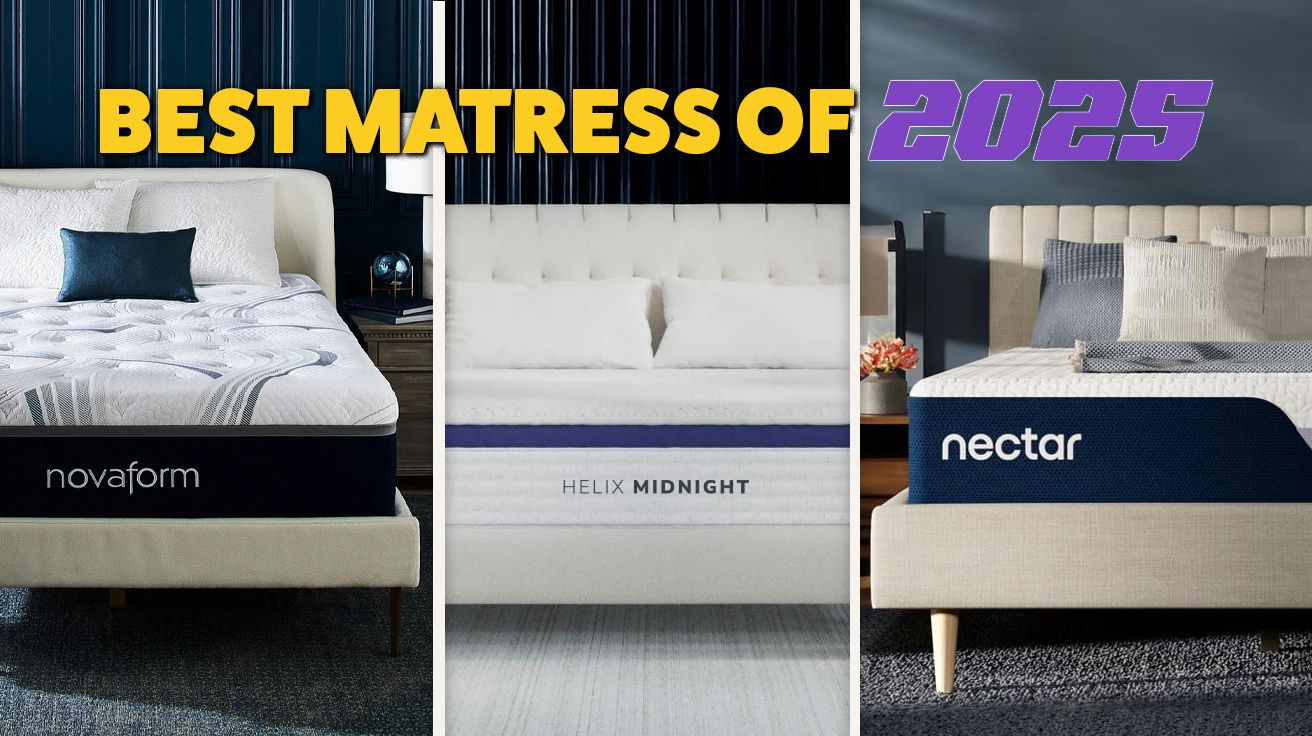


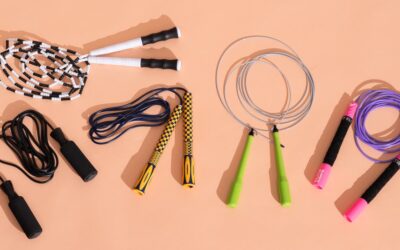
0 Comments